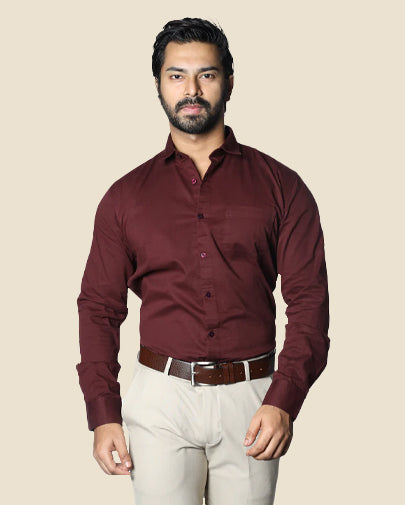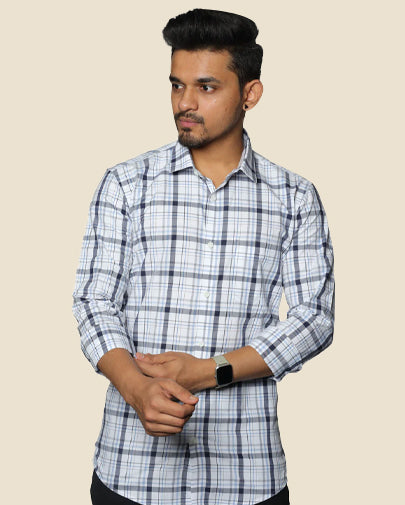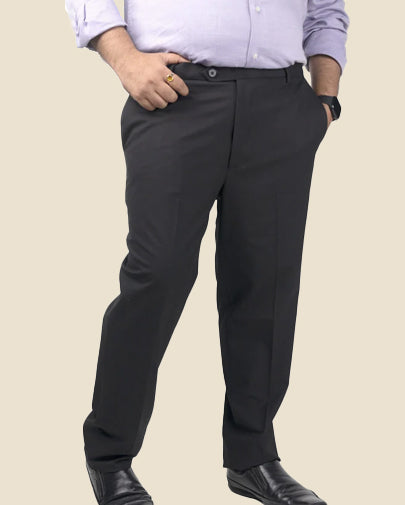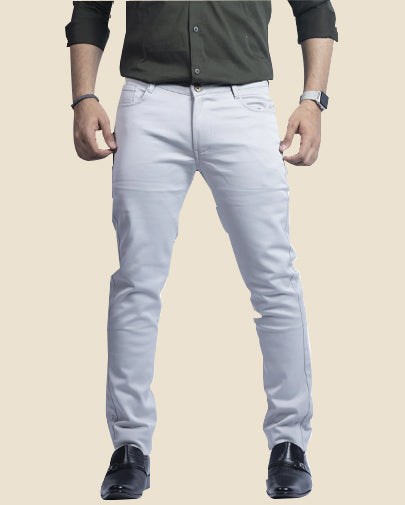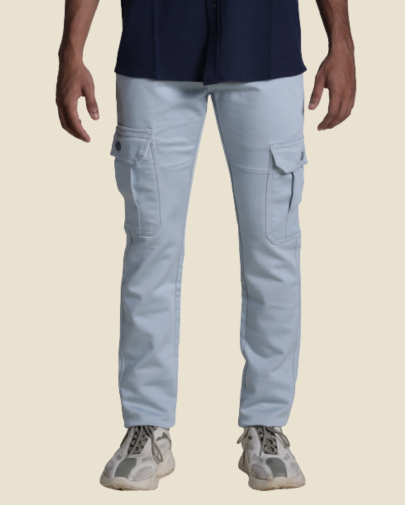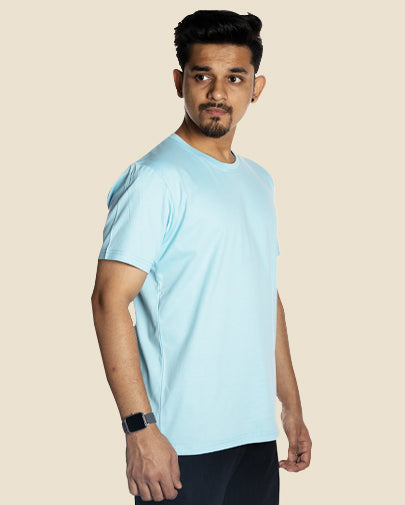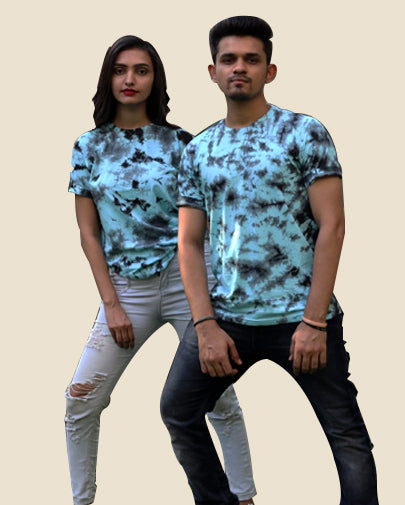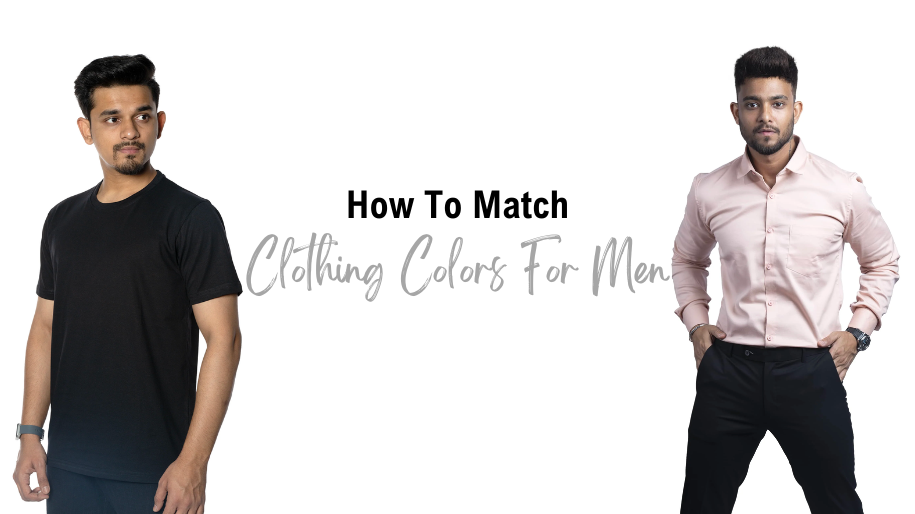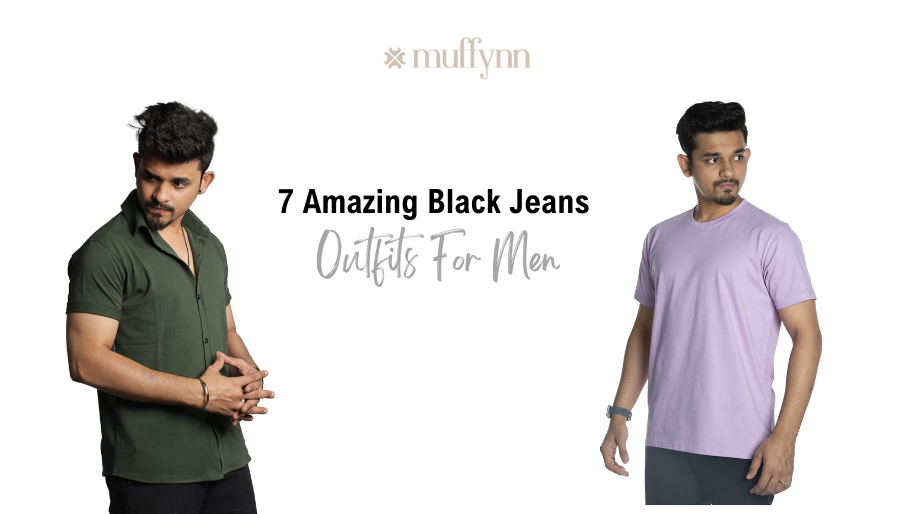Master colour combinations in your day to dat outfit is more than merely avoiding colour clashes; it's about choosing the right colours for each of our individual pieces that enhances your overall look, intentionally showcasing your personality and leaving a memorable impression.
At Muffynn, we're not just passionate about crafting high-quality clothing; we're dedicated to empowering you with the knowledge to dress with confidence and feel inspired.
Getting the colours right in your outfit can make a big difference in how you look and feel. Whether you're dressing up for a special occasion or just picking out clothes for the day, the right colour combinations can really make your outfit stand out.
In this guide, we'll talk about the basics of matching colours in men's clothing, with a focus on colours that are popular in India. We'll cover some simple rules to follow and suggest some colours that are always good choices for men's clothes. So, let's get started and learn how to bring more colour into your wardrobe!
Mastering the Art of Colour Matching
Colour matching is an essential skill in men's fashion that can transform your look from ordinary to extraordinary. It's not just about avoiding clashing colours; it's about creating a visually appealing outfit. Here are some tips to help you master the art of colour matching:
-
Understand the Colour Wheel:
The colour wheel is your guide to understanding how different colours relate to each other. Complementary colours (colours opposite each other on the wheel) create a vibrant look when paired together, while analogous colours (colours next to each other) offer a more subtle and harmonious combination. For example, a blue Muffynn shirt paired with an orange tie can make a bold statement, while a green shirt with olive trousers offers a more understated look. -
Start with Neutrals:
Neutral colours like black, white, grey, and navy are the foundation of any wardrobe. They are versatile and can be easily paired with other colours. A neutral Muffynn trousers can serve as the base for your outfit, allowing you to experiment with different colour combinations for your shirt, tie, or accessories. -
Balance Warm and Cool Tones:
Warm colours (reds, oranges, yellows) and cool colours (blues, greens, purples) can be used to create balance in your outfit. Pairing a warm-coloured Muffynn sweater with cool-toned trousers can create an appealing contrast. Similarly, a cool-hued shirt with warm-coloured chinos can provide a balanced look. -
Use Accents to Add Colour:
If you're hesitant about incorporating bold colours into your outfit, start with small accents. A colourful pocket square, tie, or socks can add a pop of colour to a neutral ensemble without overwhelming your look. -
Experiment with Patterns:
Patterns can also play a role in colour matching. A striped or checked shirt can introduce multiple colours into your outfit while maintaining a cohesive look. Just make sure the colours in the pattern complement the rest of your attire.
By following these tips and experimenting with different colour combinations, you'll soon become adept at creating stylish and well-coordinated outfits. Remember, the goal of colour matching is to enhance your overall appearance and express your personal style with confidence.
A simple way to get your colours right is to follow the 3-colour rule. This rule helps you mix and match colours in a way that's easy and always looks good.
The 3-Colour Rule: Simplifying Your Style
The 3-colour rule is a simple yet effective guideline that helps create a harmonious and stylish outfit. According to this rule, your outfit should comprise no more than three colours to maintain a cohesive and balanced look. This approach prevents your ensemble from appearing too busy or overwhelming and ensures that each element complements the others.
How to Apply the 3-Colour Rule:
- Start with a Neutral Base: Begin by choosing a neutral colour as the foundation of your outfit. Neutrals include black, white, grey, navy, and beige. For example, you might opt for a pair of Muffynn's charcoal grey trousers as your base.
- Add a Primary Colour: Introduce a primary colour that will serve as the main highlight of your outfit. This could be a bold or muted colour, depending on your preference. For instance, you could choose a Muffynn burgundy shirt to add a pop of colour.
- Incorporate a Secondary Colour: Finally, incorporate a secondary colour that complements the primary colour. This can be a similar shade or a contrasting colour that adds depth to your look. For example, a light grey blazer can complement the burgundy shirt while maintaining the three-colour limit.
Benefits of the 3-Colour Rule:
- Simplicity: This rule simplifies the process of choosing an outfit, making it easier to put together a stylish look without overthinking.
- Balance: By limiting the number of colours, you create a balanced and harmonious appearance that is pleasing to the eye.
- Versatility: Outfits created using the 3-colour rule are often more versatile and can be easily adapted for different occasions.
Examples of the 3-Colour Rule in Action:
- Casual Look: Navy blue Muffynn jeans, a white T-shirt, and a tan leather jacket.
- Formal Look: Black suit, white Muffynn satin shirt, and a red tie.
- Business Casual Look: Beige Muffynn denim trousers, a light blue shirt, and a navy blazer.
By adhering to the 3-colour rule, you can effortlessly create stylish and cohesive outfits that reflect your personal style while keeping your look understated and elegant.
Now let’s talk about specific colour combinations that are a go-to especially when you are trying to elevate your overall style quotient!
Colours that are Best for Men's Clothing
Choosing the right colours for your clothing can enhance your overall appearance and complement your complexion. Here are some colours that are particularly well-suited for men's clothing, along with tips on how they can complement different skin tones:
- Navy Blue: A versatile colour that suits almost every complexion. For lighter skin tones, navy blue creates a striking contrast, while for darker complexions, it offers a sophisticated and elegant look.
- Charcoal Grey: Ideal for both fair and dark skin tones, charcoal grey is a neutral colour that provides a balanced look. It's a great alternative to black for those with very fair skin, as it's less harsh.
- Burgundy: A rich, warm colour that works well with most skin tones. It brings out the warmth in fairer complexions and adds depth to darker skin tones.
- Olive Green: This earthy tone is particularly flattering on medium to dark skin tones, as it complements the natural warmth of these complexions. For those with lighter skin, olive green can add a subtle, natural pop of colour.
- Mustard Yellow: A vibrant colour that stands out on darker skin tones, creating a lively and energetic look. For those with lighter complexions, mustard yellow can add a cheerful and bright element to their outfit.
- Rust: A unique shade that looks especially striking on medium and dark complexions. It enhances the natural warmth of these skin tones, making it a perfect choice for autumn and winter attire.
When selecting clothing colours, it's important to consider the overall harmony of your outfit and how the colours interact with your skin tone. Experiment with different shades and combinations to find what works best for you. Muffynn offers a variety of clothing options in these popular colours, allowing you to choose pieces that not only suit your style but also enhance your natural complexion.
Understanding Your Skin Tone: The Key to Colour Coordination
Selecting the right colours for your clothing is not just about following trends; it's about understanding your skin tone and choosing shades that complement it. Your skin tone can greatly influence how different colours look on you, and knowing whether you have a warm, cool, or neutral undertone can help you make more informed choices. Here are some tips to help you identify your skin tone and select colours that enhance your natural complexion:
Of course! Here are some tips for selecting colours based on different skin tones:
Fair/Light Skin:
It's best to opt for colours that create a contrast without being overpowering. Darker shades like navy, forest green, and burgundy can be particularly flattering, while overly bright or neon colours might make you look washed out. Pastel shades can complement your skin tone, but be cautious with yellows and light greens, which might not provide enough contrast.
Medium/Olive Skin:
You have the versatility to wear a wide range of colours. Earthy tones like olive, mustard, and rust can enhance your natural warmth, and jewel tones such as emerald green, sapphire blue, and deep purple can look stunning. Be mindful of certain shades of brown or orange, as they may blend too closely with your skin tone.
Dark/Brown Skin:
Bright and bold colours like cobalt blue, hot pink, and tangerine can really pop against your skin. Rich, deep colours such as burgundy, plum, and dark green can add a sophisticated touch, while lighter colours like beige, light blue, and soft grey can provide a nice contrast without washing you out.
As a rule of thumb, consider the undertone of your skin (warm, cool, or neutral) when choosing colours. Warm undertones pair well with earthy, warm colours, while cool undertones look great with blues, purples, and cool greens. Neutral colours like grey, navy, and white are safe choices that work well for most skin tones.
Don't be afraid to experiment with different shades and combinations, as personal preference and individual style play a significant role in what looks best on you.
By keeping these tips in mind and trying out various colours, you can discover what enhances your natural complexion and boosts your confidence. Muffynn's collection offers a diverse range of colours, making it easy to find clothing that suits your skin tone and personal style.
In Conclusion:
Colour matching is a key aspect of styling. It's not just about looking good, but also about feeling confident in your style. By following simple rules and choosing the right colours for you, you can make your outfits stand out.
We at Muffynn offer a vast range of shades in our clothing collection to help you get started. Remember, the most important thing is to wear your clothes with confidence and show off your unique style.

